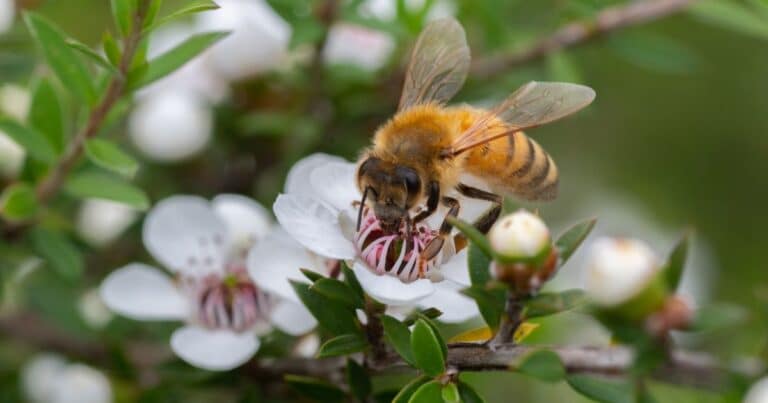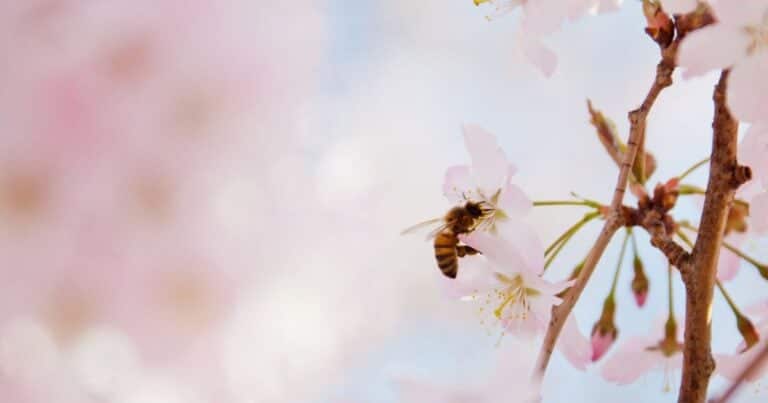Setting Up Your Flow Hive in Melbourne: Part Two
Setting Up Your Flow Hive in Melbourne: Part Two On these near-freezing winter mornings, spring may seem like a far off dream! But there is…
Setting Up Your Flow Hive in Melbourne: Part Two
On these near-freezing winter mornings, spring may seem like a far off dream! But there is a light at the end of the tunnel, and before we know it our good friends the bees will emerge from their slumber. We have been talking about some of the issues that arise when you set up your new flow hive, and I have provided some tips on the best processes that will help your hive run smoothly and your colony settle into their happy place.
When you first install the bees you will most likely be adding a nucleus colony. A nucleus is basically a starter culture of bees, and the frames will be of the same Langstroth dimensions as your flow hive. Commonly the nucs are five frames so the three new remaining frames will go on the outside of the colony; this keeps the brood and bees nice and warm so they can thermoregulate easily. From my personal experience, you are better to wire the frames and use wax foundations or even a starter strip for the bees. This ensures the bees continue forming the comb in the right direction and don’t create, what’s known as, burr or cross comb. If your bees do create a comb that goes in the wrong direction it can be almost impossible to pull frames out when inspecting the colony.
After the bees are installed, the crown board or inner lid is placed on top and then the lid. Putting a 2kg bag of Benny’s Pollen Candy under the top lid will give the colony extra food and help establish themselves in the new area. Depending on the weather and food sources, I recommended checking the colony every two weeks. When the three extra frames are almost full in the bottom box, the next brood box with wax foundation frames can go on top. Once again I recommend using frames with wax foundation as this gives you the perfect bee-space, making it easier for future hive inspections. If conditions are really good in Melbourne, this second brood box might be full within two to three months; however, carry out regular inspections every two to three weeks to check. If the second box has over 90 percent coverage of bees, the flow hive super can now go on top! But don’t be too hasty putting it on as there is no advantageous reason to, and it can slow the colony down marginally as the bees are trying to heat a massive void within their hive. You might not get to put the flow hive super on till the following spring, and that is also fine.
The queen excluder can then go on top of the second brood box, underneath the honey super. I am a bit pedantic about this feature, and really prefer steel excluders as the wires are round and bees can squeeze through them easier than the more square plastic type that comes with the flow hive package. This extends to my feelings about other unnatural aspects of the hive. As the flow hive frames are plastic, we are forcing the bees to do something quite unnatural (bees create their own wax cells and the flow hives are plastic). Due to this, I recommend brushing melted beeswax over the six frames on both sides. This hides the plastic and has a natural smell that the bees will be attracted to. Just make sure the beeswax is just melted and not too hot as it can damage the flow frames. I sell beeswax just for that application if you need to purchase some.
Once again there are many variables with the start of a new hive. It might be two months later or possibly in the new spring season when the honey will be ready for consumption. You will know when the time is right when all six frames are full and capped with wax cappings on the outside. This means the honey is ripe and ready to tap away!
And as a final comment, from my experience, the biggest issue I see people struggling with is not so much the handling of the bees but lighting the smoker! I can’t stress enough, make sure the smoke coming out of the smoker tool is thick and cool. Hot smoke will aggravate the bees and be counterproductive. Dried pine needles work the best and you will get the perfect result if you use these.
Remember to light the media from the bottom and layer the internal chamber of the smoker, as lighting it from the top won’t work as it will go out quickly. With these tips in mind, your new flow hive will be up and running perfectly in no time!


